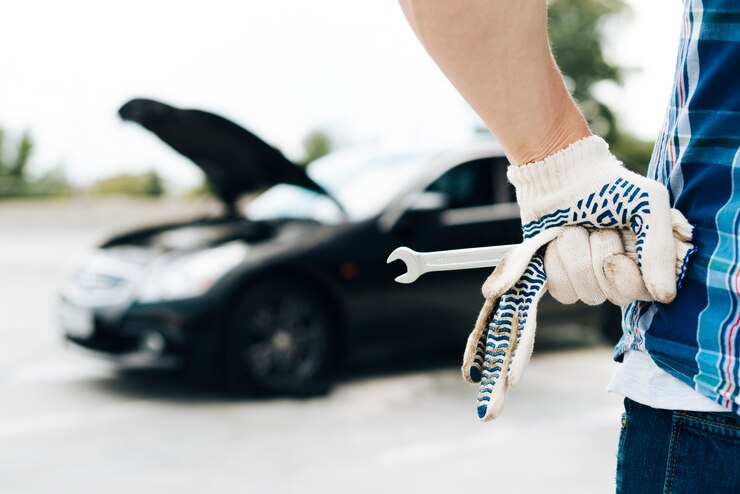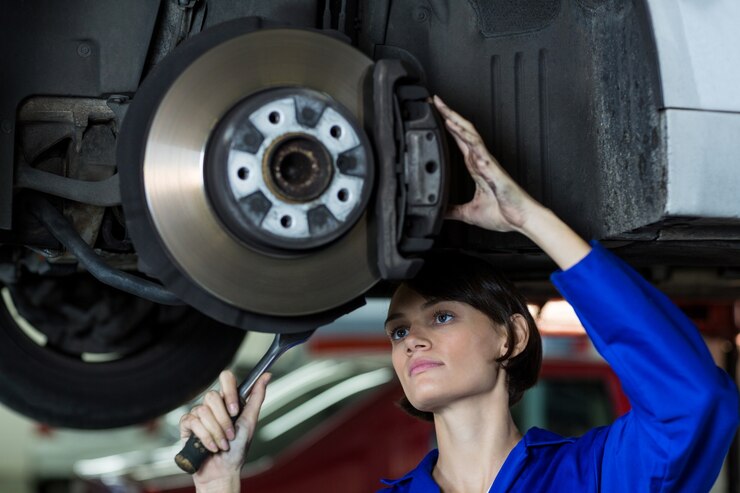When it comes to avoiding a car accident, the braking system is the most important part of the car. If your brakes break down or decrease during an accident, the results can be catastrophic or even fatal. Unfortunately, this happens everyday. Accidents caused or aggravated by defective brakes can be caused by after-sales service or very often by a manufacturing defect.
Defected Brakes manufacturers can apply unprocessed methods when building many aspects of a car, but there is no simple reason to slow down the materials or the design of the car. In fact, most people agree that the brakes must be operated more precisely than almost any other part of the vehicle. The attractive law firm Reyes Browne Reilley, specializing in brake claims, is useful for the following reasons:
We know the law, the needs of victims and the services provided by insurance companies and manufacturers. Errors and explanations in simple English. We will work with you in a process or until an agreement is reached.
Maintaining the brakes is one of the most common tasks that you can not ignore. Some parts of the brakes have a lifetime and require periodic maintenance. They sometimes replace the work properly. Fortunately, your car or truck usually tells you that your brakes are appropriate.
Sometimes these are harmless sounds that you do not need to fix or fix easily. Other times no. Defected Brakes Your brake is one of the most important elements of the safety of your vehicle. So, if you notice one of the common warning signs of brake problems, it’s time for a specialist to inspect your car, truck or vehicle.
Drive more carefully and avoid more expensive damage. Affordable car accident lawyer, braking force If one of the red or yellow brake lights on your dashboard is on, you may need to perform an inspection. It can also be the smart electronics of your car that warns you of a problem.
Can you hear a metal elbow when you move? If you hear a very loud noise stopping braking, it is probably because of the noise of the brake warning light that causes the brake pad wear. They are made of steel to make them healthy when they touch the rotor.
You should know that your pads are worn out and need to be replaced before you experience rotor damage. This can be an expensive solution. Defected Brakes reducing noise during braking The grinding you feel in the pedal can also mean a lot. There is only gravel or stone in the stirrup unit that can be easily removed.
However, you can also drive without maintenance brakes. Brake pads can be worn and you can hear metal in the metal that can create grooves on the brake disc. Not beautiful. Grinding may also indicate a lack of lubrication in vehicles equipped with drum brakes. Brake pads (the rotor press to slow down the vehicle) may scratch due to rust on metal plates such as the baseplate.

An irregular rotor may cause blinking, vibration or scratches when braking, steering wheel shake or vibration during braking. The brake discs are big in the discs. When you press the brake pedal, the brake pads prevent the rotor from slowing down as well as your vehicle. Y
ou want the rotors to be smooth and evenly thick. Over time and with thousands of tire turns, it is normal for the rotor surface to undergo minimal variations. Sometimes rust can develop. During braking maintenance, the face of the rotor is generally made (smoothed and balanced) to correct these defects.
This work must be done exactly with the specifications of your car. The smallest differences in disk thickness say a thousand by one inch, three sheet widths – can cause a feeling of trembling when braking.
Fluid Flushing: If you have a quiet pedal on the brake, have a service technician look for liquids from the master cylinder or elsewhere on the brake system. The master cylinder is the power generating unit for your brakes. It has a tank like this for your windshield wiper, which contains brake fluid.
When you apply brakes, this fluid is forced by fine lines that create hydraulic pressure. Defected Brakes, When the continuous emission of this system may be insufficient to force the brake pads to resist the rotors.
Spongy or soft brake pedal. If you notice a difference in the resistance of the brake pedal, it will feel slower or sink below when you press on the doormat. This is a sign that you need an immediate interview. There may be wind or moisture in the brake system or a master cylinder problem. In general, the pedal should stop between 1 and 1 ½ inches above the ground for cars equipped with a brake booster. If you have manual brakes, the pedal should stop more than 3 inches from the ground.
The car continues on its way. This may be due to a broken brake line, defected brakes or a caliper problem. A caliper can apply more or less pressure during braking, resulting in unequal stops.
Burning smell while driving A strong chemical smell of intense and recurring braking on steep roads is a sign of overheating of the brakes or clutch. Drive to a safe place immediately, check that the parking brake is completely released and allow the brakes to cool down. If you do not do this, the brake brakes may boil, which may cause the brakes to fail. When smoke escapes from a wheel, it may be a jammed caliper and it can be dangerous to proceed without repair.
Jump up and down if you stop. If your car or brakes are hard, it’s probably not a brake problem. Your shocks may need to be replaced. Any noises or symptoms of braking will not pay you back. This can be a type of harmless material on the brake pads. There may be dust or moisture in the brake system that does not cause any damage. You may just need to add a new brake.
But you must be sure. Brake parts eliminate with time. Symptoms of self-diagnosis or delays in the braking service can put you and your passengers in unnecessary danger. And like a lot of car problems, if you have a problem, your delay is longer, you can risk a lot of repair costs.
POLICY IS NOT FOLLOWED, the braking system is one of the most important features of the safety of trucks and cars. Defected brakes as drivers in one of the busiest metropolises in the country, we have often faced slowdowns. Defective brakes prevent the driver from preventing a collision with another car, truck or pedestrian. This inability can cause fatal accidents that can be avoided if the brakes function properly.
What are the broken brakes? The braking system on motor vehicles is very complicated. Defected Brakes and many parts are necessary for the proper functioning of the system. Two different things can lead to broken brakes. First, a car design problem can lead to brake failure. This means that a whole range of cars is slowed down because of design issues.
Examples of design errors:
Hydraulic lines are sensitive
Brake calipers crack
The brakes are too much
Failure of the anti-lock protection system
Parking brake is defective
Design errors can occur due to two different problems. First, manufacturers can try to save time in selecting the parts used to make a braking system in a car. In addition, a manufacturer can not perform an appropriate test to ensure the effectiveness of brake design. In addition, automobile production problems can lead to broken brakes. Poor manufacturing means that the car is not well made. In other words, a car manufacturer or a mechanic is not properly installed part of it.
How do I know if my brake is broken? The brakes are usually tired. This means that parts must be replaced over time. However, it is not normal for a car owner to change the brake pads once a month. In other words, if you find out if the brakes have been damaged or defected brakes you have to ask yourself if you should continue to replace some of the braking systems. Z It is also important to keep track of possible reminders. If a manufacturer calls back a car because of a broken brake, it is important that you hear the recall.
What other parts of the car can be broken? Vehicles are made up of many different parts and each of these parts can be tainted with defects. The common defects are:
The tire is defective
Seat belt is defective
Disable system direction
How can I get compensation for an accident?
Defective brakes One way to obtain compensation for damages is to file a claim for personal injury. The victim may file a plea or negligent appeal as part of product liability.
Who is responsible for broken brakes? If you are involved in a car accident caused by defected brakes, you may be wondering who is responsible for your injury and claimed damages for your injuries. Product liability exists to ensure that people injured by defective products have the option to pay for any damage caused by a defective product.Several failures may be responsible for brake failure. Possible responsible parties are: The manufacturer (this may include the vehicle manufacturer and the defective part). The auto mechanic or other specialist has installed the braking system.
What are the elements of a product liability claim? For an applicant to recover under the product liability rule, he must prove the four elements with additional evidence.There is a product error. The product of the defect is when the product leaves the hands of the manufacturer. The error rendered the product extremely dangerous and contributed to the plaintiff’s injuries.
Why should I hire a lawyer for injury after an accident caused by a brake failure? Accidents involving brakes are often complex. The average person can not prove that a broken brake is the cause of a car accident. A personal injury attorney knows how to prove that every item of product liability helps injured claimants repair the damage caused by broken brakes. A personal injury lawyer can also help a plaintiff hire experts to reconstruct the accident and determine the contribution of accidental brakes.
CONCLUSIONS
Your brake is one of the most important parts of your car. When the brakes of a car or truck are defective or in poor condition, drivers play seriously as soon as they enter the road. Whenever a driver jumps on a brake pedal, the question is whether the broken brakes or defected brakes are working or if the vehicle is in critical condition.
Big brakes, even those that are less functional or sporadic, have greatly increased the risk of an accident. They also mention the possibility of a driver being liable for damage and property damage to another person. Braking problems are usually caused by accidents. According to a survey of the National Highway Traffic Safety Administration, published in early 2015, between 2005 and 2007, 10,000 critical accidents for car accidents are due to brakes.
This represents 22% of accidents caused by vehicle problems. These data indicate that the brakes cause thousands of accidents each year that can result in thousands of injuries and fatalities. If you or a loved one has been involved in a car accident due to faulty brakes, consider consulting a Fatal car crash attorney in Los Angeles to understand your rights and options.
REFERENCES
*Gary Ganaway, Air Disc Brake Production, Use & Performance Archived at the Wayback
Machine, NDIA Tactical Wheeled Vehicles Conference.
* Spartan Engineering 1959[permanent dead link]; Disk Brakes; accessed.
*http://www.roadranger.com/ecm/groups/public/documents/content/rr_axag-0300.pdf[permanent dead link]; Dana Spicer Trailer Axles & Brakes; Application Guide AXAG-0300 Air Disc
Brakes.
* Fancher, P.; Winkler, C.; Campbell, M. (March 1992). “The influence of braking strategy on brake temperatures in mountain descents.
*The University of Michigan Transportation Research Institute. UMTRI-92-11: 2.
* http://HardBrakes.com TiSpeed Hard Brakes Titanium Brake Heat Shields.
*Deaton, Jamie . “How Brake Rotors Work”. HowStuffWorks.
*Disc brake”. Merriam-Webster Dictionary.
* Lentinello, Richard (April 2011). “The first car with disc brakes really was .” Hemmings
Sports & Exotic Car.




